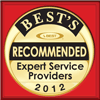

Frequently Asked Questions
National Risk Services offers answers to frequently asked questions about our various products, services and terminology. Click on a subject heading below to view questions and answers relating to your selection. Links throughout the answers will guide you to further information on our website or from other sources. Should you have any further questions, please consult our Contact Us page.
What is SOTA?
State of The Art (SOTA) refers to high tech Risk Management user-accessed decision making data from internet technology for intelligent and effective data gathering and maintenance to solve processing and risk/cost problems. SOTA provides RMIS programming for record access and data processing that facilitates true management of risks and costs.
What is VRM?
Virtual Risk Management (VRM) is the application of Risk Management Services from outside the insured’s or their broker's physical offices. All Risk Management functions are performed and communicated from NRS offices and RMIS systems. The information and processing and problem solving is communicated by web access, email, fax and phone.
What are the advantages to a Virtual Risk Manager as compared to in- house employees?
There are in-house Risk Management Departments that middle and large businesses develop that professionally execute RM duties and responsibilities. These businesses have the resources to support the payroll and physical plant costs as well as incorporating this department into the corporate culture. A Virtual Risk Manager is a Risk Management department that maintains the highest level of professionalism and technology and at the same time efficiently eliminates the higher cost of payroll, use of physical resources, corporate culture adaptation and other efficiency costs.
How does Workers' Compensation Insurance Benefit from WC Underwriting Services?
The Workers' Compensation line of insurance is different in many elements. It is the one coverage that is charged to the insured based on more than a rate applied to one exposure and one hazard. There are more than one dozen separate and distinct line items that an underwriter may contemplate in the process of creating a premium base and the exposure and ultimately the final premium. The alternative potential premiums will vary based on the great variety of the chargeable elements and this process may be discussed with commercial and non-commercial underwriters to benefit the insured.
How does the Claims Management function affect the WC premium?
The short version of this answer is that all elements of premium calculations are based upon loss experience for all similar insured businesses and this is expressed in the WC rate, the experience modifier, the individual insured claims, the retrospective adjustments, the dividends, the assessment charges, the scheduled modification ratings, the application and rating for large deductible plans. The claims have two basic elements to be managed and this is a constant monitoring, review and communication with the claims adjuster. The two basic elements are the validity of the claim and the speed of closure of the claim. The claim cost is two fold: the incurred amount is the total of the paid portion of the claim and the reserve portion. The paid portion must be examined and managed for appropriate indemnity payments and medical payments. The second cost aspect is the reserve portion which must be managed for accuracy as the reserve portion is partially derived from the adjuster's pure judgment and is therefore subject to objective management. Managing the reserves will manage the cost. Working the resolution of a claim from the insured's perspective and costing element benefits the carrier underwriting profit.
May an insured benefit through and with their broker?
SOTA VRM services are designed for application with the insured's broker or agent. SOTA VRM benefits are designed to benefit all parties including the carrier, trust or captive insurer who benefit from the complete data.
| Today's Insurance News |
|
Updated 24 Hours a Day |
| National |

